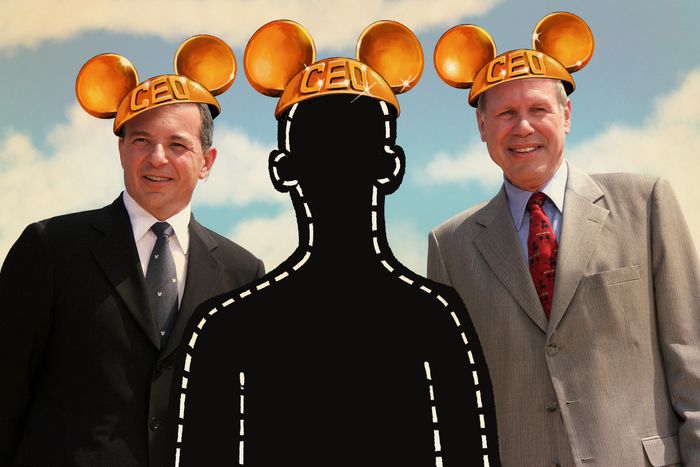
While eight men have taken turns guiding The Walt Disney Company over the course of its roughly 100 years of existence, arguably only three have managed to make a real and lasting impact: current CEO Bob Iger, Michael Eisner, and of course, the icon for whom the company is named, Walt Disney himself. All three ruled the Magic Kingdom for at least two decades, oversaw creative and commercial renaissances at the company, and to varying degrees became celebrities in their own right. And yet for all their positive attributes, Disney, Eisner, and Iger had one other thing in common: They were really bad at figuring out who would succeed them as CEO.
We saw this play out recently with Iger, who had to return as CEO of the company barely a year after formally departing it because his own handpicked successor turned out to be a disaster. But Disney’s succession curse actually stretches back to the mid-1960s, when Walt’s untimely death left Disney wandering the cultural wilderness for decades. And while Eisner’s handoff to Iger in 2005 turned out brilliantly for the company, it came only after many years of dawdling and delays and only after a very public shareholder revolt forced Eisner’s hand.
So why have Disney’s best CEOs done such a lousy job with such a critical task? “Being the head of Disney is a very strong drug and it’s very hard to let go,” as The Hollywood Reporter’s Kim Masters tells us in the episode. “Leaving Disney — it’s a big deal. It’s a very identity-defining thing.” In the fifth episode of Land of the Giants: The Disney Dilemma, hosted by Vulture TV reporter and Buffering columnist Joe Adalian, we explore why it is that Disney’s most successful leaders have done such a bad job making sure the company would be able to survive — and thrive — without them.

